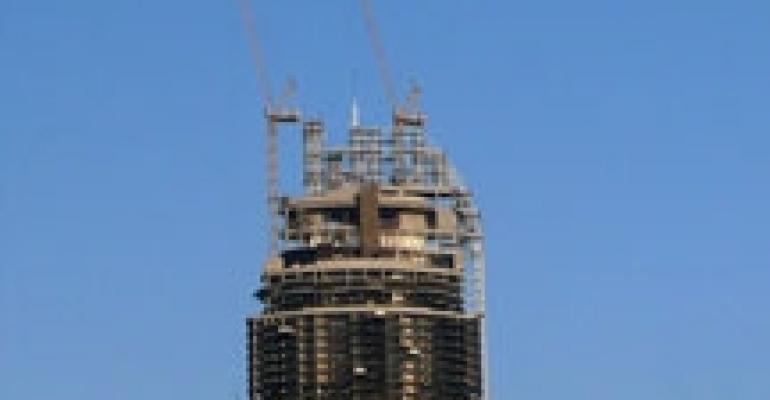
The world’s tallest building, the $20 billion Burj Dubai, is taking shape in the desert of Dubai amid a rising collection of structures that form an engineer’s dream. Developers and technology leaders from around the world are flocking to the United Arab Emirates to see firsthand the innovation taking place in the rapidly growing city of 1.4 million.
At a pair of conferences in Dubai this month, the RealTech Middle East 2008 and NextGen conferences, and in tours of current projects, the sheer volume of development in Dubai stunned about 200 members of the RealComm Conference Group, a research and educational organization, and other attendees as they studied automated business solutions and intelligent next-generation buildings.
Mick Dalton, senior director of asset management at Emaar, developer of the 160-plus story Burj Dubai, explained in a webinar following the conferences some of the challenges of creating an exceptionally tall building.
“When you build a super tall building, you have quite a few problems. How do you get power up into the building? How do you get telecommunications into the building and wireless technology to the top?”
Access can become a life or death issue. “In the event of a fire, how do you get firemen up into the building and still communicate with them from each floor? We have an intercom system throughout the building for the firemen to plug into.”
Changing the aircraft warning lights atop the building spire poses a big challenge, Dalton says. “The spire’s seven stories high. How do I get a guy up there when the spire’s moving about two meters from side to side while he’s changing a 250-pound aircraft warning light?”
After it’s completed, the Burj Dubai, which exceeds 2,300 feet, won’t hold the title of world’s tallest building for long. A 330-story structure is being planned in Saudi Arabia, says Jim Young, founder and CEO of RealComm.
Just a few years ago, when he traveled to the region, Young wondered if the grand plans of developers would come to fruition. “I found myself looking at marketing trailers in the middle of the desert.” He questioned how people would be moved from building to building in the city without adequate transportation.
“This trip, not only are the foundations poured and the steel up, but people are moving in.” A new 41-station monorail system is about 85% complete after just three years. “It gives you an indication how fast and furious development is proceeding in this region.”
Dubai engineers have even developed solutions to piping water out to a massive residential development, man-made islands shaped like palm fronds. “How do you get water to the islands of the palm fronds? It’s like a James Bond movie where you disappear into the water; it dips and goes underneath the sea in a tunnel system and ends up on the other side where the resort is located,” Young says. “It’s architectural and technological innovation that we haven’t seen anywhere else in the world.”
At the Hydropolis hotel, visitors take a boat to the welcome lobby. “From there you descend underneath the water to the main reception area. The majority of the hotel rooms are actually under water. Your view from your bedroom is not a sunset or the Burj, it’s a dolphin swimming by,” Young says. “I can’t even begin to understand the complications of oxygen and electricity and all those other things — but if it’s going to be done anywhere in the world, it’s going to be done in Dubai.”
Darlene Pope, managing partner of RealComm, was also impressed. “We were able to visit the Burj Al Arab, the only seven-star hotel in the world,” she says. The hotel is designed like the billowing sail of a boat.
“Developers here don’t only focus on intelligent buildings, but also on intelligent communities with hospitals, government buildings, hotels, retail and office space,” she says. “There is a very strong environmental consciousness here in Dubai.”
But even as developers strive for energy efficiency with green initiatives, they want to be the best in the world — the biggest and tallest. But they are also meeting stringent IT demands.
After arriving at her hotel on a Saturday night, Pope logged onto a wireless network on her laptop and within three minutes was able to check in with her family and friends and let them know of her safe arrival, she says. “It was amazing to fly all the way across the world and yet we still had the same common Internet.”
The trip left a strong impression. “It is truly an amazing place — very inspirational.”

